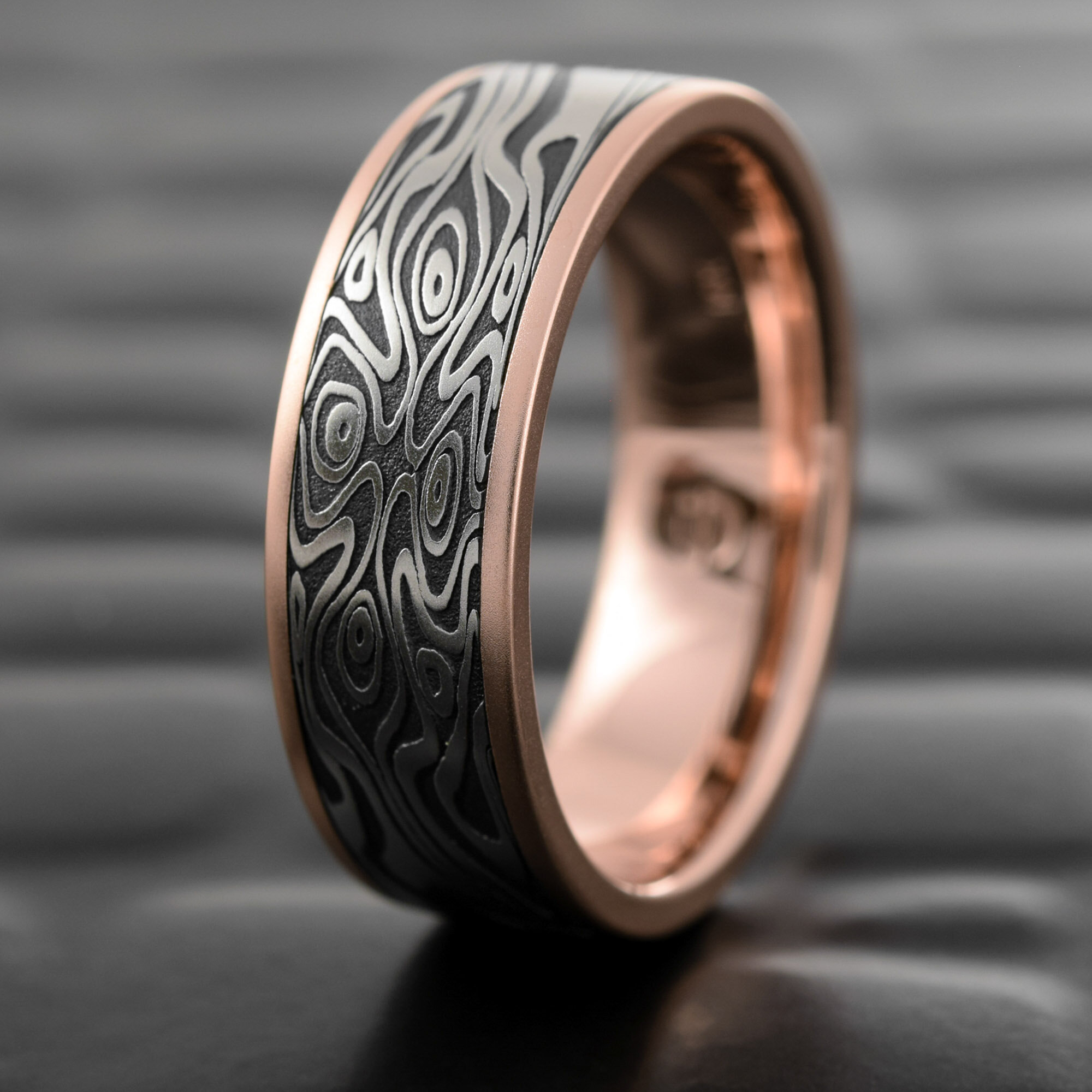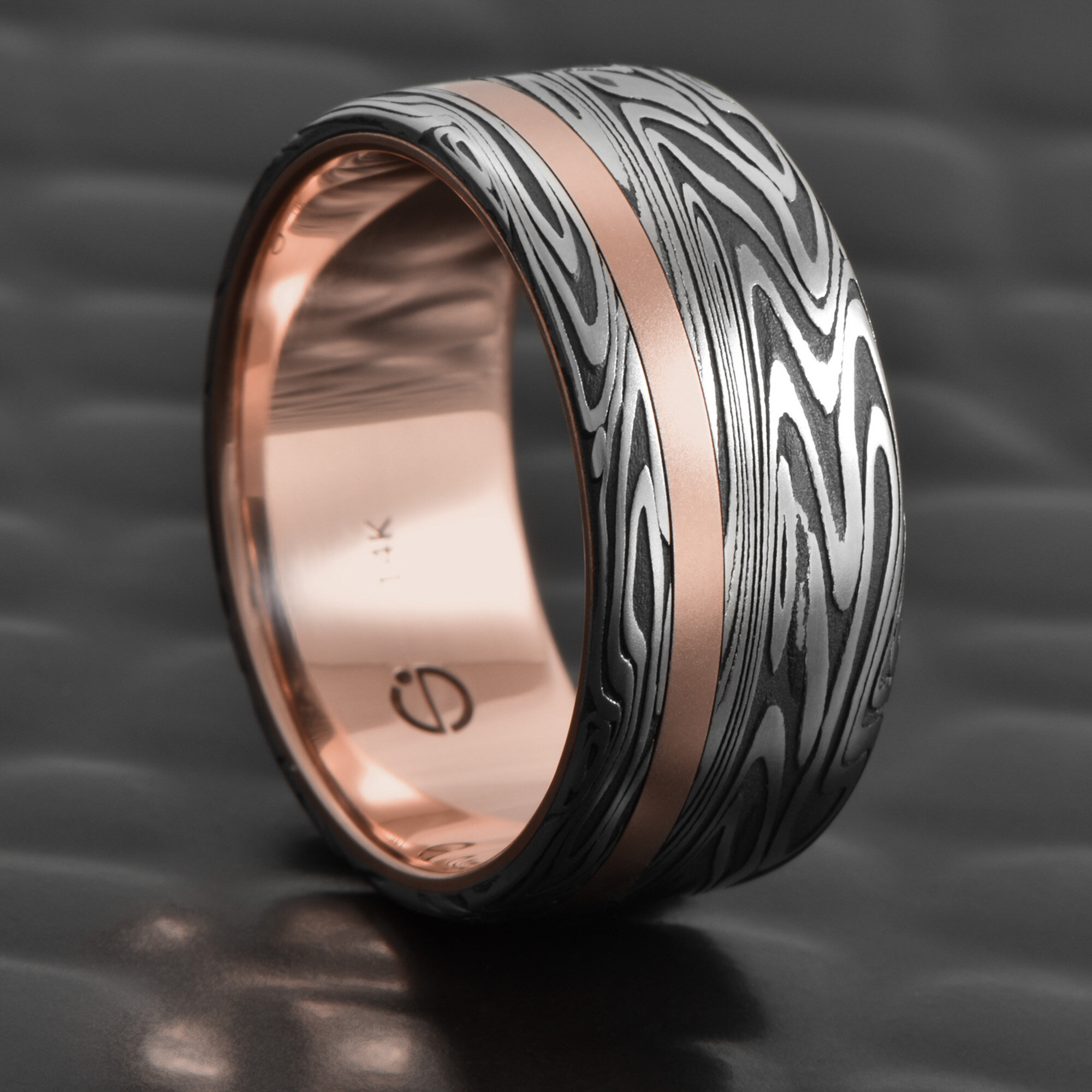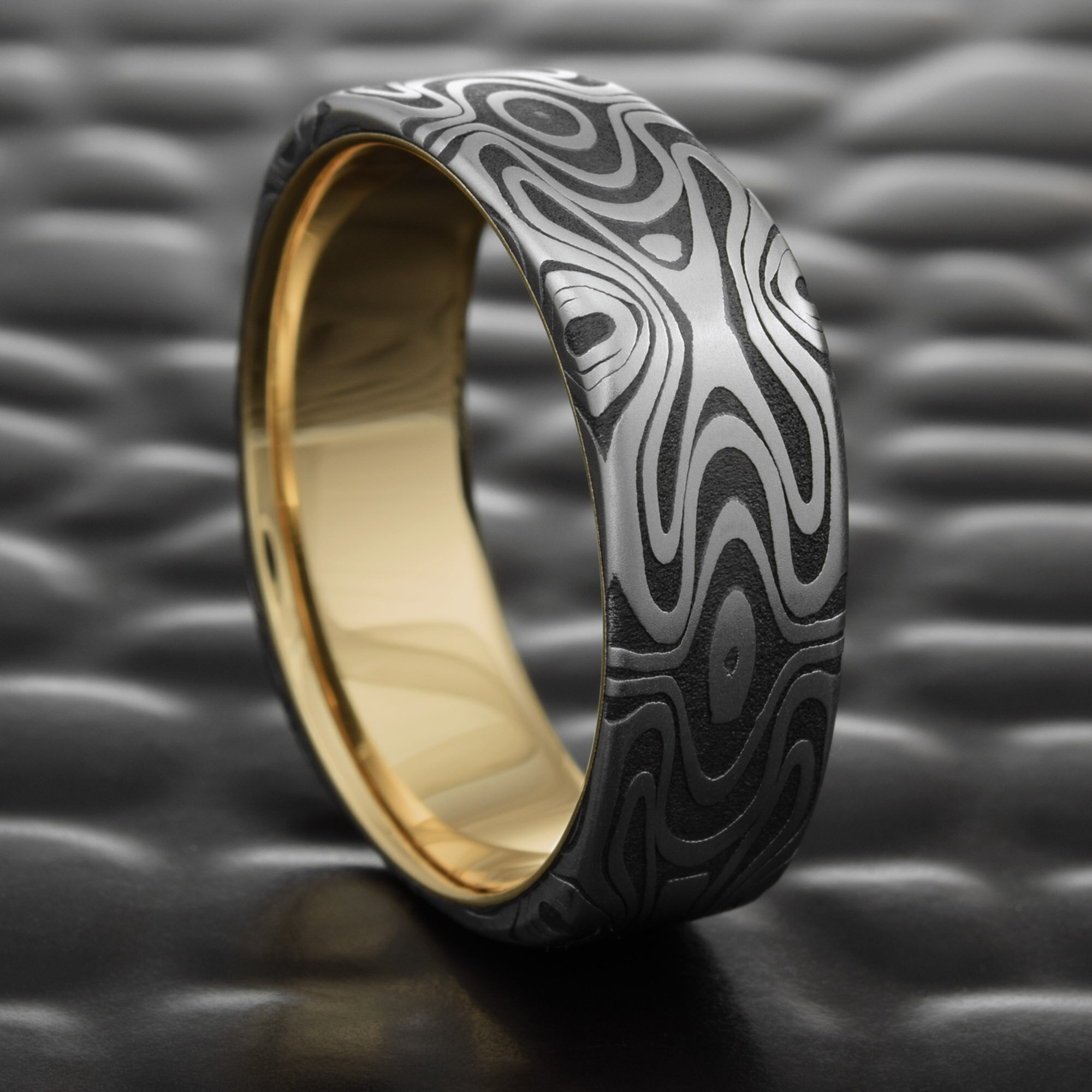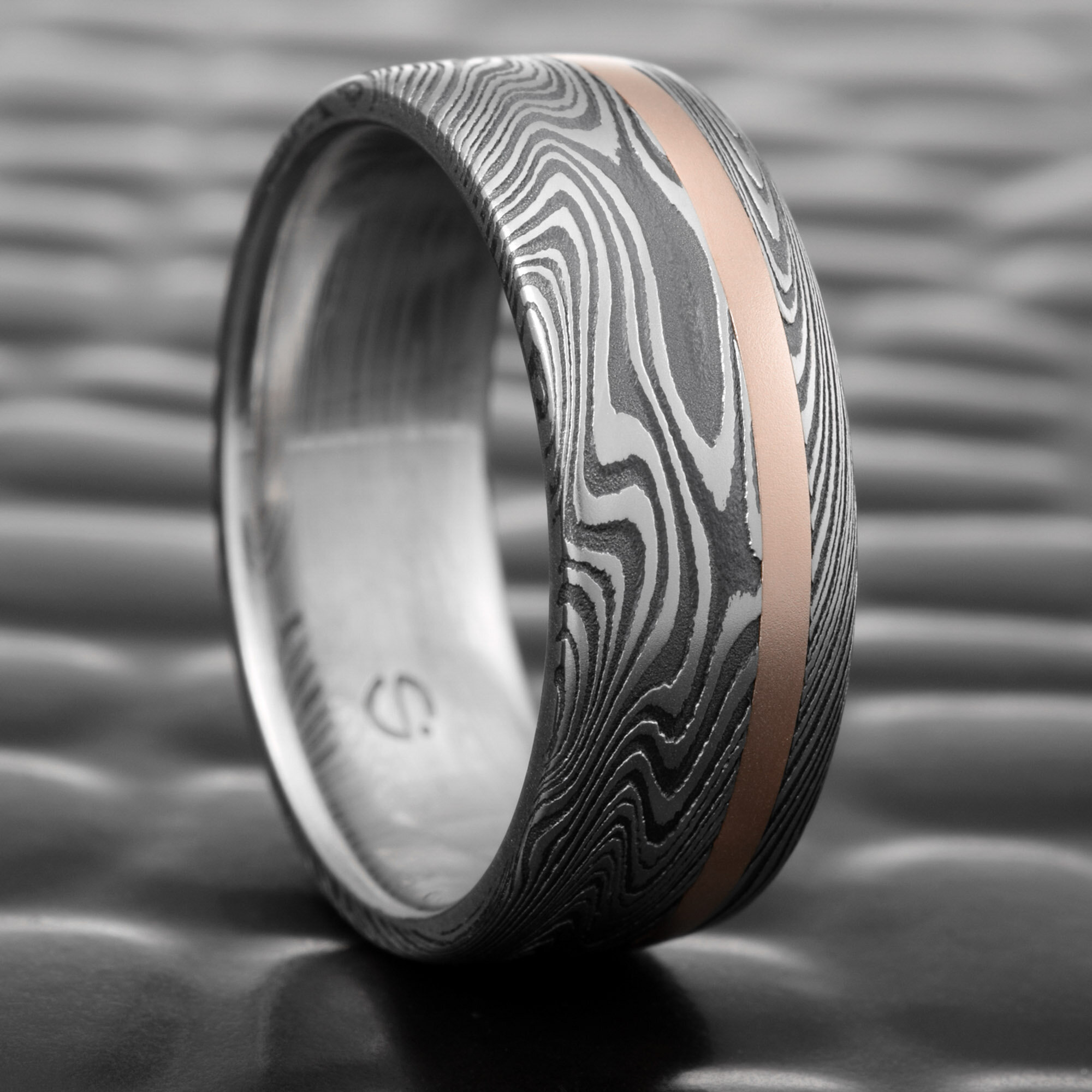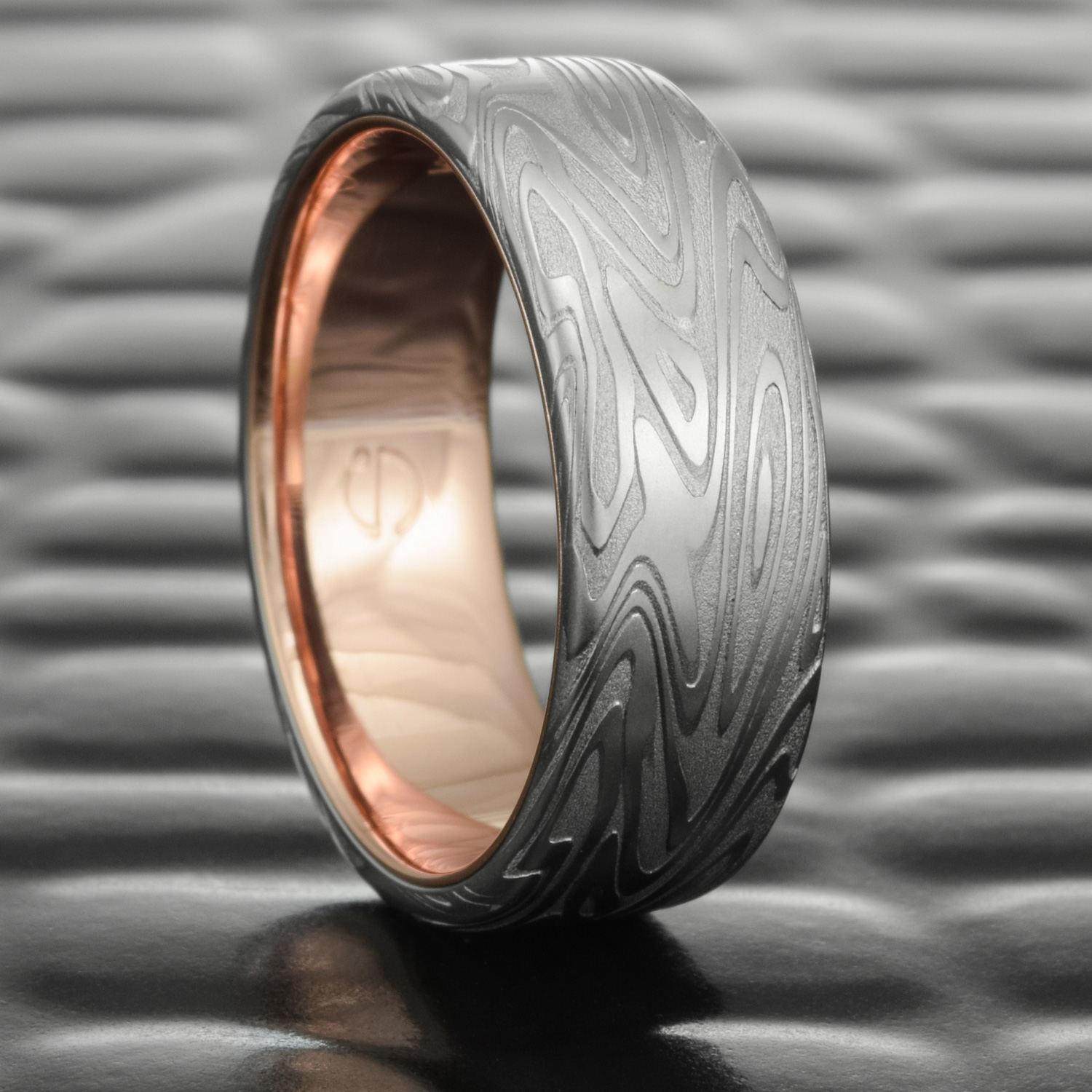The Most Sincere Form of Flattery: Battling Intellectual Property Theft on the Wild Wild Web
Digital Theft hurts
This is a screen shot of a website using stolen STEVEN JACOB copyrighted images to sell knockoff Damascus Steel rings without our consent.
Stolen Images are used to sell counterfeit Damascus Steel rings
In the age of digital abundance, where creativity flows freely and information is at our fingertips, there exists a shadowy realm where the hard work and innovation of artisans are callously exploited. This is the world of intellectual property theft, where the creations of talented individuals are stolen and redistributed without consequence. It's a struggle that many artisans face, yet one that often goes unnoticed in the vast expanse of the internet. Only we, the makers, who depend on our crafts for our livelihood, see how often our designs, proprietary techniques and copyrighted content are taken and used without our consent.
As a small business owner and maker, I've experienced firsthand the frustration and helplessness that comes with trying to combat intellectual property theft. It is more widespread than you might think. I frequently identify new infractions through searching keywords and images, or I am informed of theft by fellow artisans or customers who find these fraudulent sellers. These perpetrators operate with impunity, shielded by the anonymity of the internet and the lack of effective enforcement mechanisms. Even Etsy has become a frequent platform for these pirates to sell items using images they steal from a makers website.
As designers and makers, we invest so much into our craft, honing our skills over years of dedication and practice. It is alarming to me that someone who has not done this work themselves, would choose to claim it as their own and utilize someone else’s images or creative content for their financial gain. This is an unfortunate reality for countless artisans who see their creations and proprietary content repeatedly copied online. For them, it's not just a matter of lost revenue, but a blow to their artistic integrity, as well as an affront to the customers who are duped and misled by these practices. Imagine purchasing an item listed with a stolen product photo only to receive something that looks nothing like it. Take the following for example.
The STEVEN JACOB ring shown for sale in this Etsy listing above is nothing like what you would receive from this seller when purchased. Yet, there it was for sale to anyone who wanted to buy it. Below is a review by someone who ordered another design from this seller using stollen images from www.mokume.com.
After this customer realized that had been misled, they identified that the product images were actually those of a STEVEN JACOB creation and confronted the seller. This was still met with pushback from the seller who did not want to refund the sale. Only when Etsy was made aware, did they receive a full refund. This is not a good online shopping experience, and as a company who depends on online sales, it is worrisome for the future if consumers loose confidence in online purchases due to bad experiences like the one above.
But beyond the customer service and economic implications, there's a deeper issue at play here – one of ethics and responsibility. This practice not only deprives someone of their rightful earnings, but also undermines the very foundation of their creativity and commitment to their craft. Allowing this to take place sends a message that creative talent and hard work have little value, and that the pursuit of profit trumps the principles of fairness and integrity.
Artisans must come together to confront this challenge head-on. We must educate ourselves and others about the importance of respecting intellectual property rights and the impact of piracy on the creative community. We must work together to call it out whenever we see it and require the GoDaddys, the Etsys, and the Amazons of the world to quickly remove the stolen content from their sites, and lead the charge for stronger legal protections and enforcement mechanisms to deter would-be infringers and hold them accountable for their actions.
Perhaps most importantly, artists must never lose sight of the value of their work and the unique gifts that handcrafted works offer our customers. Despite the obstacles we face, we must continue to create and innovate, knowing that our art has the power to inspire, uplift, and enrich the lives of others. And however challenging, we must persevere, for it is only through our collective efforts that we can truly safeguard the integrity of our crafts and ensure that the creations of artisans are available, valued and respected in the digital age.
A note to our customers
If you are a customer or perspective customer of STEVEN JACOB reading this, we’d like you to know that there are only three places you can purchase authentic STEVEN JACOB products - our showroom in Colorado, this website and our Etsy store “StevenJacobJewelry”. To learn more about identifying counterfeit STEVEN JACOB products, click here.




